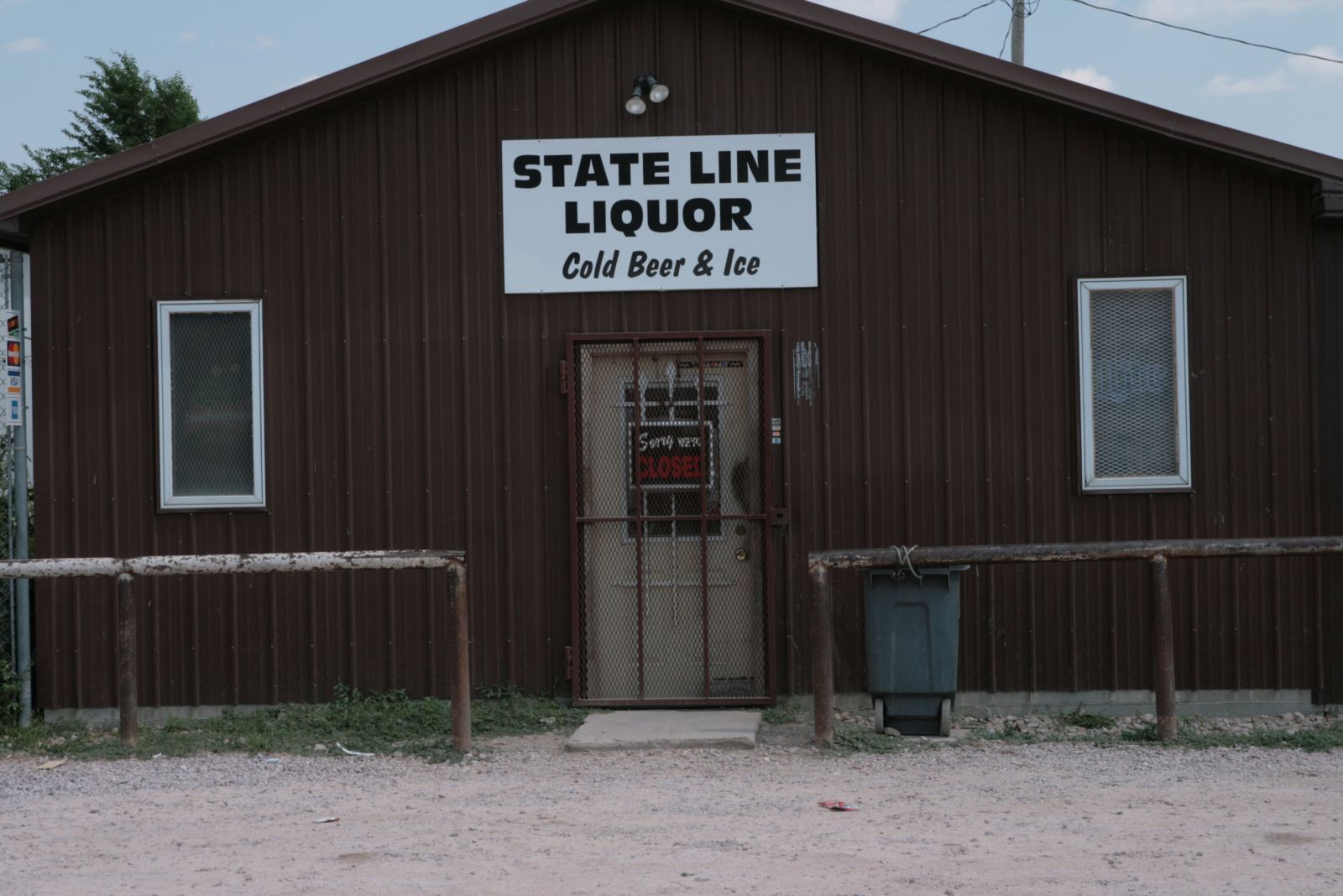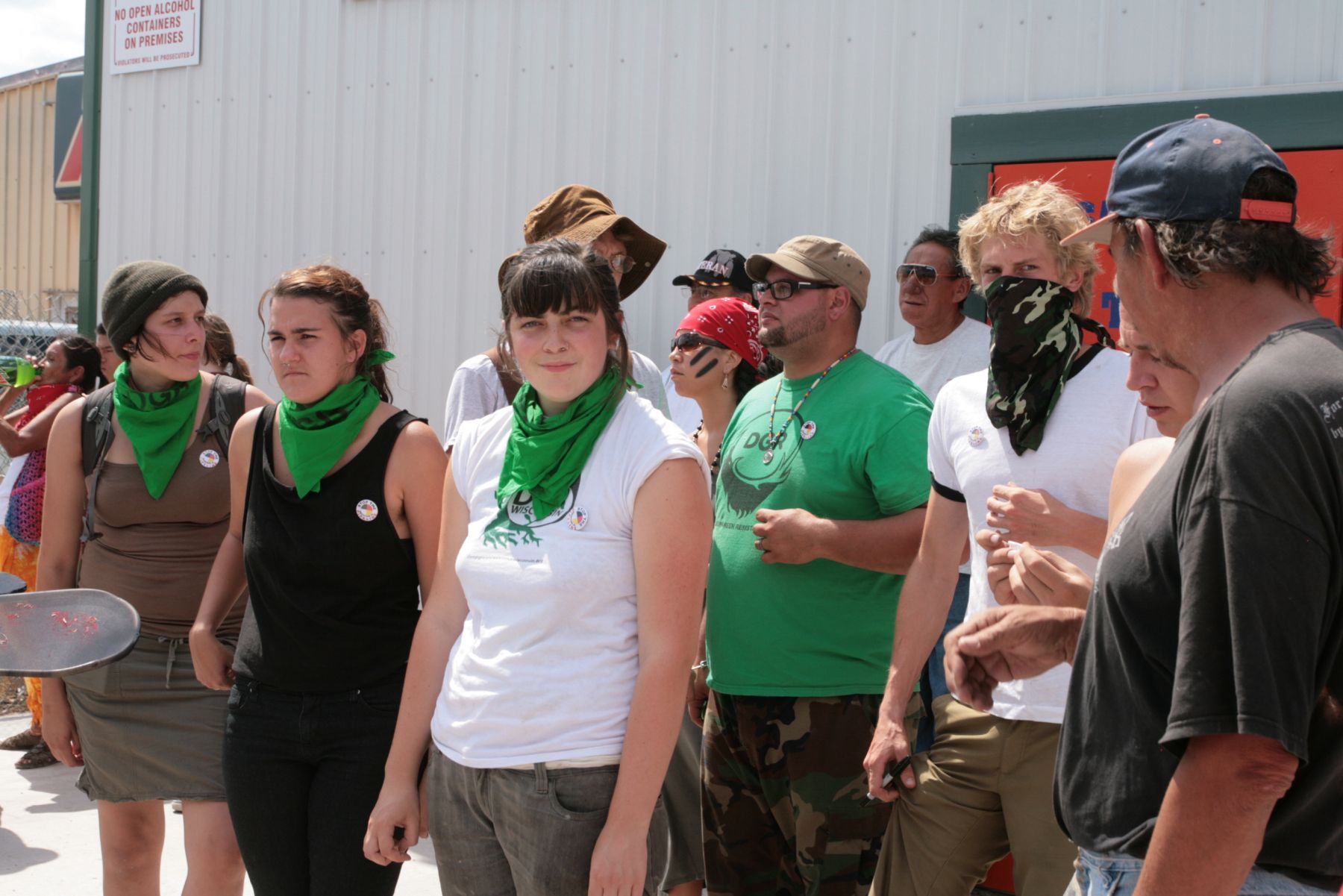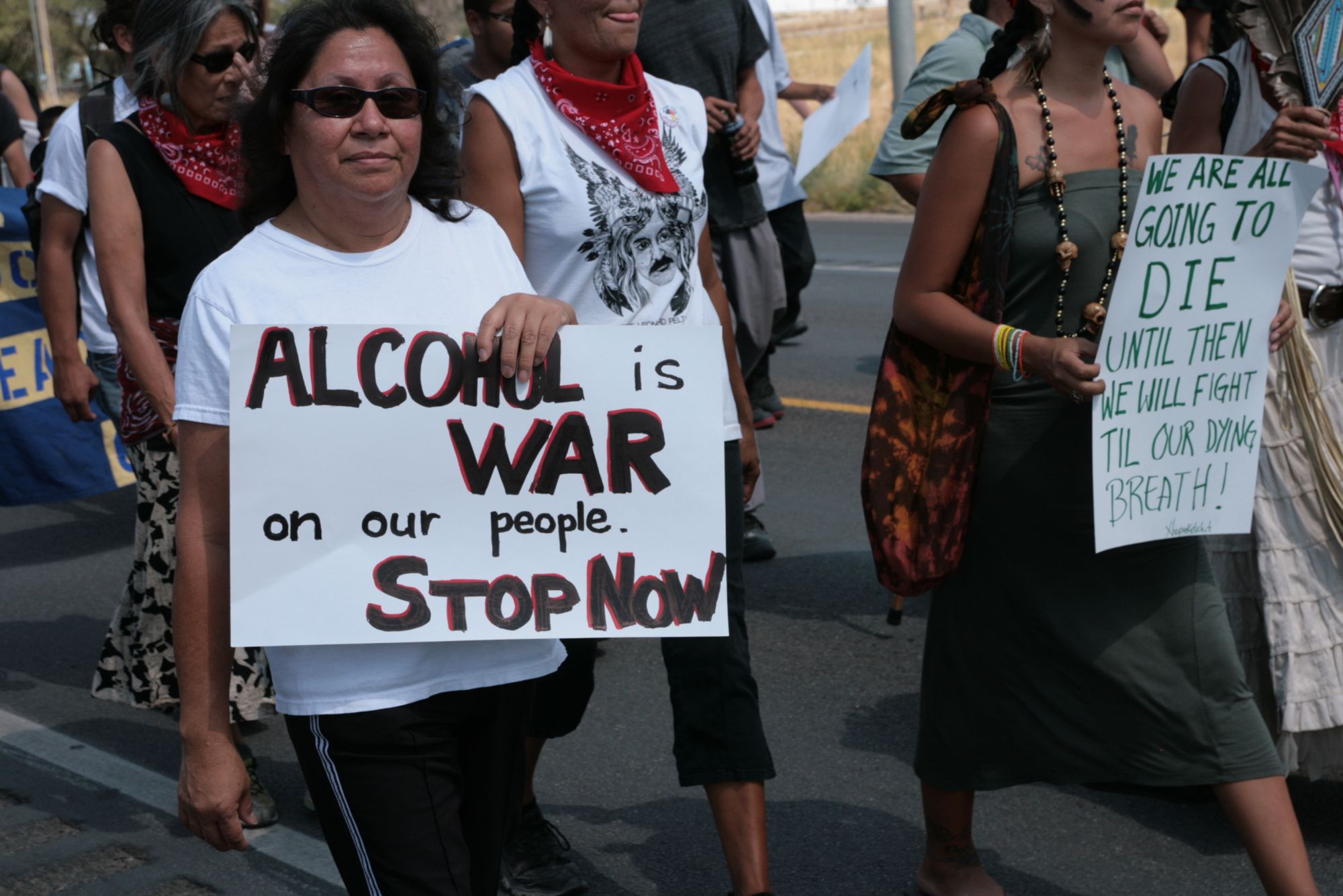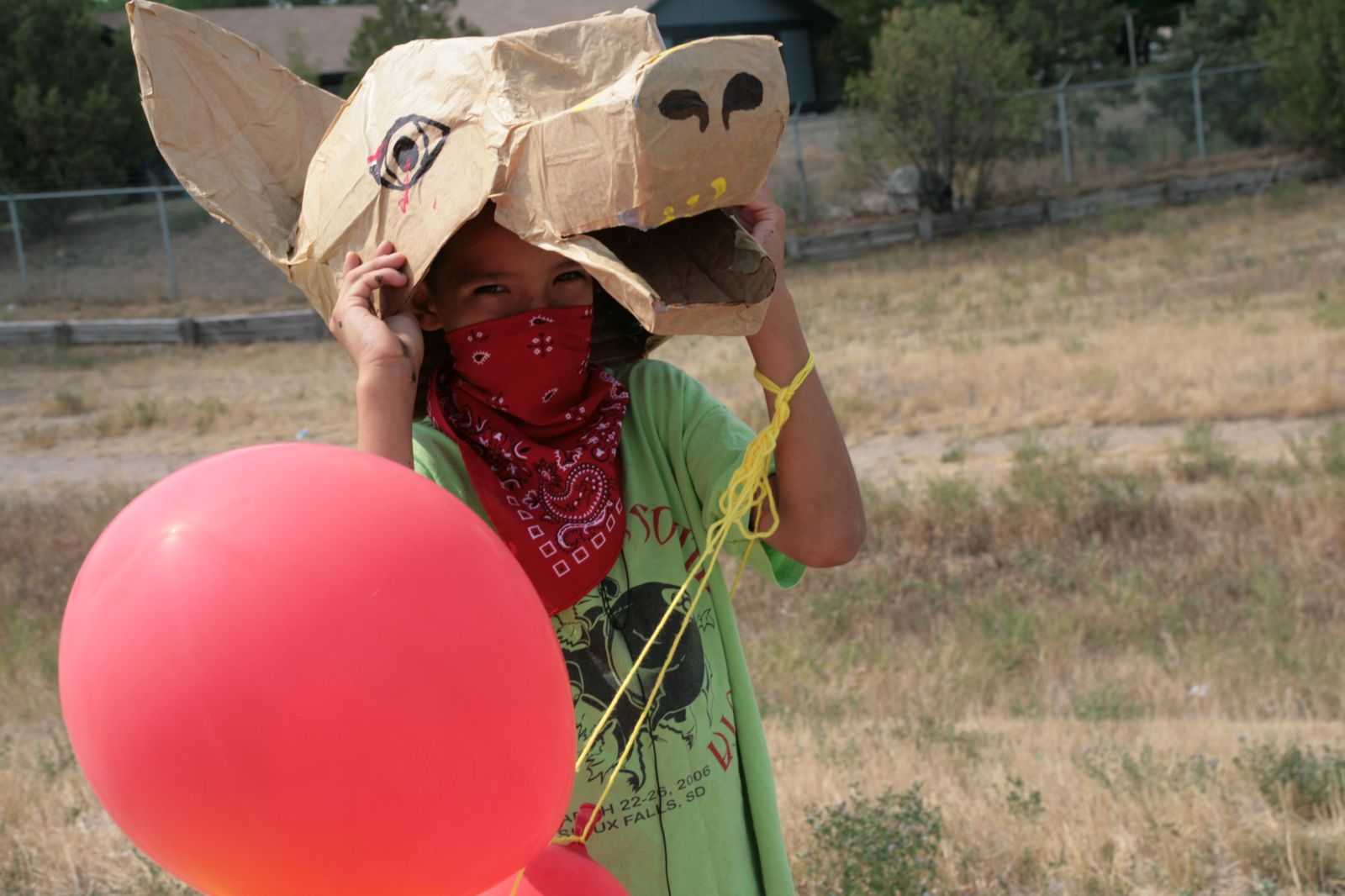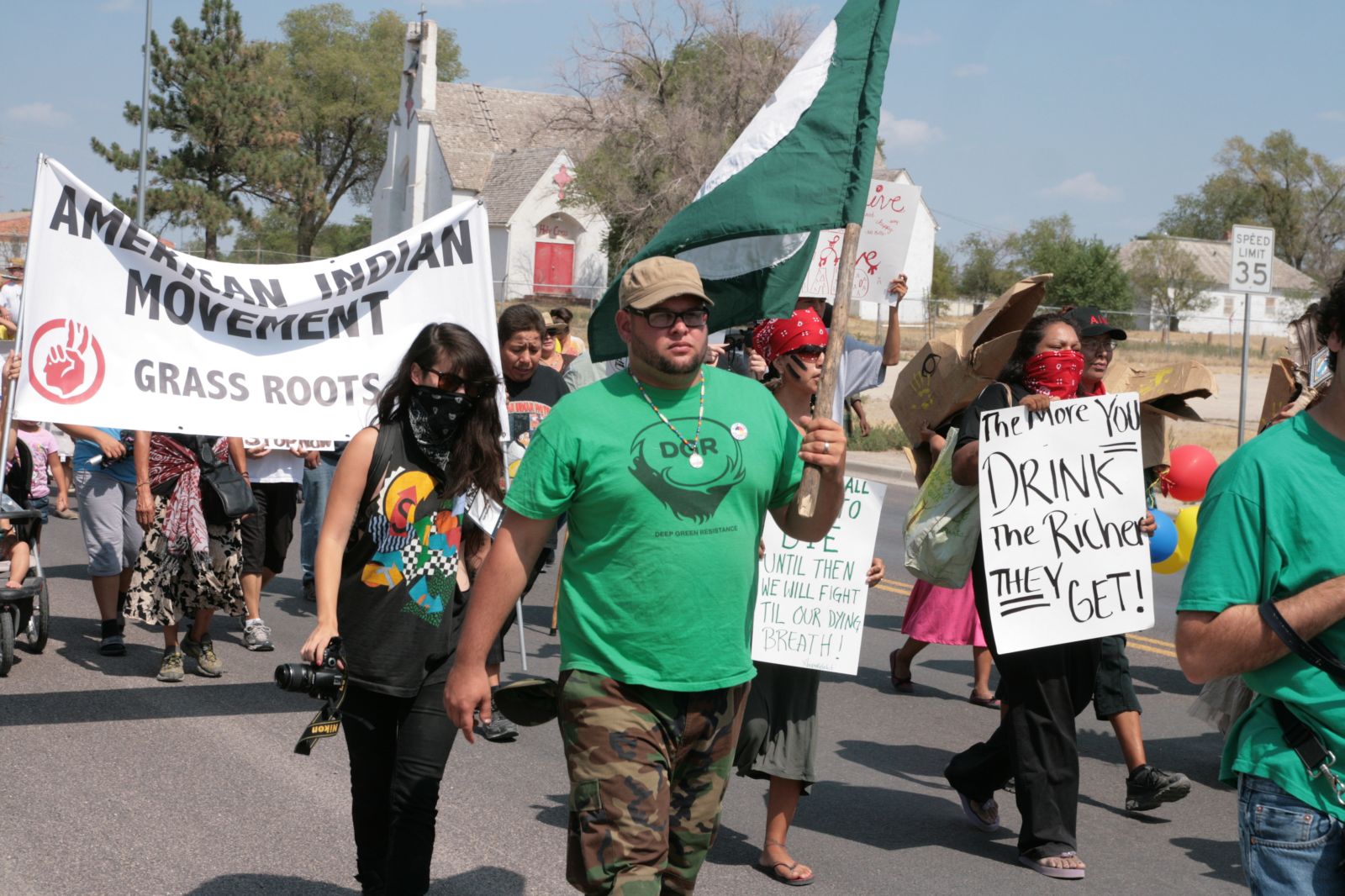
by DGR News Service | Jul 1, 2019 | Building Alternatives
Editors Note: At Deep Green Resistance, we have a fundamental critique of agriculture, which is the most destructive activity human beings have ever done. However, horticulture, permaculture, and small-scale cultivation of biodiverse polycultures can be done in a sustainable way that enhances local ecology. This food source will be essential as industrial food systems collapse due to climate instability and human cultures are forced to adopt localized systems, and the generation and strengthening of these systems will give people more autonomy for resistance work.
by Isabel Marlens / Image: Association for Temperate Agroforestry
Hou Xueying, a mother from Shanghai, was tired of food safety scares and of a city life disconnected from the land. So she moved her family to the country to learn about sustainable farming. Her parents disapproved; they had struggled to give her a comfortable life in the city — they could not understand why she would throw it away. When she got to the country, she found that the older generation of farmers could only tell her how to grow as they did, using chemical fertilizers, toxic insecticides.
Still, she persisted, and today she runs a diversified organic farm that is, in her words, a “self-reliant ecosystem.” She raises a wide variety of animals and crops, making use of ingenious techniques — like allowing ducks into the rice paddies — to fertilize plants and eliminate pests without using chemicals. She’s also turned her farm into a place of learning, teaching children from the city where their food comes from. Through all of this, Hou Xueying has found a community that shares her values for the first time. She believes that the importance of the farming way of life extends far beyond putting good food on the table. As she explains in the short film, Farmed with Love, “Only conscious foodies can save the world.”
~~~
Many of us have heard some version of this statistic: the average age of farmers worldwide hovers around sixty years old. In the U.S., farmers over sixty-five outnumber farmers under thirty-five by a margin of six to one. People like Hou Xueying are going against the tide which has been tugging young people from the land for a long time, leaving older people alone on farms, with no one to take their place once they’re gone (except, increasingly, robots). So truly, as this older generation of farmers retires — a generation that widely embraced large-scale industrial farming — the question grows more pressing: who will grow the food of the future and what will their farms look like?
Every person on earth needs food every day. Every day, food is tended, harvested, transported, stored, and served up on our tables. In a very real sense, food cannot be separated from life itself. And so it has been said that changing the way we grow and eat food is one of the most powerful tools we have for changing our economies and society as a whole.
So when we ask: what will the farms of the future look like? We should really be asking — what do we want the future to look like? And then answers may begin to emerge.
Though many are enamored of technological solutions, others have pointed to tech’s inescapable environmental impacts, to the way it strengthens corporate monopolies, and to the already evident, and as yet unforeseen, effects that it has on society, including on human health and happiness. When I look at the young people I know, at the issues that concern them most, four points of focus rise to the surface. These can be rather broadly categorized as: climate and the environment, diversity in its myriad forms, economic inequality, and a lack of community, loneliness. Young people don’t want to work the land if that means working long hours for low pay, using dangerous chemicals, while the fruits of their labor are borne away to profit corporate executives they will never meet. But that doesn’t mean a future in which we don’t work the land at all. In fact, it means quite the opposite.
~~~
Climate change and agriculture are inextricably intertwined.
As I’m sure many of us know by now, our globalized industrial food system is a major contributor to anthropogenic climate change. The machinery and chemicals involved in industrial farming rely heavily on fossil fuels. So does packaging and refrigeration, not to mention the transport of food around the world by truck, ship, and plane. Many countries import and export nearly identical quantities of the same products. All of this creates economic activity, which adds to indicators of “progress” like GDP; not reflected in these numbers are the environmental costs of all the fossil fuels burned in the process.
At the same time, more and more of the forests, grasslands, and wetlands that helped maintain the nearly perfect balance of the carbon cycle until the start of the industrial revolution are being cleared to make way for livestock or annual crops, which do not play the same role in sequestering carbon. This wreaks more havoc with the earth’s natural climate-stabilizing systems.
On the other side of the coin, the changing climate is threatening agriculture as we know it. Increasingly extreme temperatures and weather events harm food crops. Studies show that the parts of the global South where people are already food insecure are being hit hardest. Many of these regions are less industrialized, less “developed” parts of the world, and so contributed little to the creation of this crisis — and yet, they are suffering the most.
In short, industrial monocultures — those big farms you see with acres and acres of corn or soy, not to mention those giant cattle feedlots — are systems that degenerate, they die,over time. They produce more carbon emissions than they sequester. Their pesticides kill insects, including pollinators, a trend which may soon initiate “the collapse of nature.”
Every year, they suck the nutrients from the soil, and replace them with toxic chemicals. They draw water from local watersheds, pollute it, and let it run off into gutters, or evaporate when hot weather comes, rather than employing management techniques that would allow it to sink back down to replenish local aquifers. Eventually, land treated this way becomes barren, eroding away to create dead zones in rivers and oceans or being lifted up by the wind to join the particulate matter in the air, poisoning the lungs of human beings (it’s telling that a recent report showed that Fresno and Bakersfield, in the heart of California’s industrial farm-filled Central Valley, have the worst particulate pollution in the USA). The air is truly brown in such places. The crops grown on these farms are sent off by truck or ship to factories where they’re processed and packaged — using more resources — and finally delivered to our homes, often in a form that’s as bad for our bodies as the dust is for our lungs.
This is what agriculture looks like in a globalized corporate economy, where, like the nutrients from the soil, the livelihood is sucked from farming communities and siphoned up into the coffers of a few giant corporations .
But as I’m sure many of us know by now, this is not what agriculture has to look like, by any means. Farms can be regenerative, living systems, that produce a bounty but no waste. They can supply the needs of a local community — if that community is willing embrace the idea of eating a mostly seasonal, locally adapted diet — with no need for long-distance transport by trucks, ships, or planes. Farms do not have to be net carbon emitters — plants absorb CO2 when they photosynthesize, and only emit it very slowly, through respiration and decomposition; studies show that, if managed correctly, farms, orchards, and even animal grazing systems can become places that sink and sequester CO2.
Not only that, but these are the same kinds of diversified farming systems that make people most resilient in the face of climate change. If we grow one kind of bean, for example, as a cash crop, and then the summer is too hot for that variety, we lose absolutely everything — all of our profits, which we would have used to buy food throughout the year. If we grow a diverse variety of crops, however, all with slightly different climactic limitations, then not only will a heat wave fail to do us in, but we can feed ourselves, right from our own backyards, no matter what happens. In fact, there are many points in favor of small diversified farms. Even minimal diversification has been shown to increase crop yields, while intensive permaculture systems — which have only recently been recognized by science — have the potential to completely transform our concept of productivity, and of what a “farm” is.
But that’s only the beginning.
~~~
When we talk about “diversified farms,” we usually mean crop diversity. But there is also wild biodiversity, human diversity, cultural diversity, language diversity, diversity in ways of thinking and being — all of which oppose the corporate consumer human monoculture which is so swiftly, insidiously spreading. Researchers have correlated biodiversity with language diversity, while others have found that certain regions function as “bio-cultural refugia,” harboring “place specific social memories related to food security and stewardship of biodiversity.” It’s easy to see these ideas brought to life in the context of a local food culture — crop varieties, local species and geography, language, and other aspects of culture like food preparation, celebrations, ways of passing knowledge on to the next generation, are all intimately connected. Lose any one element and the whole system is threatened.
Colonizers have long removed Indigenous people from their land knowing that this in turn will deprive them of their food culture, and so make them dependent on the colonizer’s economy — creating widening ripples of destruction.
In the same way that a colonizing culture hopes to put the world to work for a single purpose (usually, creating wealth for a specific set of colonizing elites) vast industrial farms destroy diverse ecosystems and replace them with a single species, like corn. This has been a driving force behind the sixth mass extinction which is urgently threatening all life on earth. But human beings are animal species too, after all, who could be playing supportive roles in diverse ecosystems, rather than acting as agents of destruction. In fact, corn now has a bad reputation in many parts of the world, but the corn, and the humans who first helped it to evolve thousands of years ago, are not to blame. There are few things more beautiful than the gemlike kernels of the heirloom corn varieties which long provided the basis of a healthy, vibrant, balanced diet for people throughout what is now Mexico and the United States — and which still does so for some today. These varieties are adapted to be drought-resistant, to withstand extremes of heat or cold, and are integral to many aspects of the cultures that rely upon them for survival.
This brings us back to the idea of a changing climate, of extremes. Over all the years that people have been planting seeds, they have been participating in a process of evolutionary adaptation: they’ve been selecting the seeds that thrived in their particular soil, with their particular weather conditions, their particular light. Seeds banks are great — especially those that save only Indigenous, non-corporate patented varieties; but they are not enough. We need living seed banks, seeds planted every year — eased into an uncertain future — if we want a real hope for survival.
Not only that, but farmers who grow a single crop for export instead of growing for their local community are at the mercy of another force as volatile the weather: the global economy. Many of us remember The Grapes of Wrath, the image of men dousing oranges with kerosene, throwing potatoes into the river and guarding them with guns, while the children of the migrant laborers looked on, starving. Modern versions of this still happen. Millions of people are hungry, and yet the amount of food we waste every day is absolutely staggering.
As John Steinbeck wrote, back in 1939, in a passage that still captures the essence of the global food system today:
“There is a crime here that goes beyond denunciation. There is a sorrow here that weeping cannot symbolize. There is a failure here that topples all our success. The fertile earth, the straight tree rows, the sturdy trunks, and the ripe fruit. And children dying of pellagra must die because a profit cannot be taken from an orange.”
~~~
Of course, the global economy in general is vastly unequal. This relates to the food system in different ways in different parts of the world. In wealthy, industrially developed countries, fresh, local, organic foods are generally thought of as being accessible only to high-income people (and to a great extent this is true), while organic farming is thought of as an occupation accessible only to people with privilege (also true, in some cases). Meanwhile, in the less “developed” world, locally grown and adapted foods, along with farming, are often stigmatized as backward, while the fat and sugar-filled processed foods that have wreaked havoc with the health of the developed world are held up as symbols of the future.
I believe that it’s generally wrong to tell anyone what they should or should not be eating, but it is important to question these kinds of assumptions. At the moment, high quality, local, organic food is a symbol of privilege in developed countries. But this is due to a rigged economic system — in which tax laws, trade agreements, government subsidies, and absolutely outrageous advertising budgets for things like sugary drinks and processed foods, systematically bolster multinational corporations — and not because of any quality inherent to the food itself. Once, not so long ago, it was the less economically privileged people who grew fresh, heirloom organic produce — of a quality that many of us can only dream about today — in backyards, on farms, in empty lots. Today, we think of processed and fast foods as being the cheapest options. But this, again, is because governments are doling out subsidies to corn and soy farmers, raising insurance and loan rates on fruit and veggie farmers, and handing ever more power to big business. We think of growing one’s own food as something that is only accessible to those with privilege, and to a great extent this is true as well. Land is prohibitively expensive, and time, under capitalism, is the most scarce, the most precious resource of all. The typical CEO is paid 162 times what his low-level employees make per year, and so many must work multiple jobs and eighty-hour weeks if they want to feed their families. Of course, the poor quality of affordable foods contributes to health problems that take up more time and increase financial burdens.
These are horrible structural injustices, and the structures that perpetrate them have to be dismantled. Yet, while the food system is a great place to start, we must not forget that many of the people who have been responsible for growing food over the last several hundred years have done so in the context of slavery, or of exploitative tenant or migrant farming, leaving legacies of trauma connected to land and food that cannot, and should not, be easily forgotten.
However, despite these absolutely undeniable wrongs, many are beginning to agree that without food sovereignty (defined here as,“The right of peoples to healthy and culturally appropriate food produced through ecologically sound and sustainable methods, and their right to define their own food and agriculture systems,”) we cannot have meaningful control over our lives, or our futures. As Leah Penniman, of Soul Fire Farm in Albany, New York, points out, there is a lot of racism built into the food system — food apartheid, as she describes it — and the separation of certain people from land and good food has not been an accident. She is one of many at the forefront of a movement that is reconnecting systemically marginalized people to land and to food.
This can be as simple as growing fresh food in vacant lots, on rooftops, on the grounds of community buildings like libraries, schools, churches. “Crop swaps,” or movements like #FoodIsFree — ways of trading produce for low or no cost — are amazing solutions that not only equalize the local food game, but also bring people together, building real community.
Meanwhile, in the global South, some are rejecting the idea that leaving the land for polluted, overpopulated cities is a sign of progress. One’s income might be higher working in an urban sweatshop than it would be in a rural village. But that increased income does not necessarily reflect an increased quality of life. In villages where people own their own land and live as they have for generations — using clean water, eating local foods, making clothes and other goods from locally sourced materials, relying on community support for things like child care — a comfortable life can cost almost nothing. (This is why corporate land grabs, for purposes like mining, logging, oil drilling and factory farming, are among the most pressing human rights issues of our time.) In confirmation of this, the Food and Agriculture Organization of the UN has declared that small family farming is the only way to feed a growing population, while the economic powers that be have confirmed it by creating a climate in which those who fight for land rights must fear for their lives.
In the end, you could say it comes down to this: if we all divest our time, energy and money from the corporations that fill megastores and supermarkets, and invest instead in ourselves, in local farmers and small local businesses, then we can keep money and precious resources circulating in our communities. When we do so, the creation of local food economies can play a meaningful role in equalizing society as a whole. And there are added benefits. When people and local governments reclaim their resources, it weakens the economic power of corporations, and strengthens democracy. Not only that, but societies that don’t leave people desperate are societies where people are less likely to turn against each other. There is the potential for a decline in xenophobia and conflict, and for diverse communities to unite, instead, against the real enemies: those who profit enormously off a system of gross injustice, and inequality.
~~~
Nashira is an urban ecovillage near the Colombian city of Cali. It is run entirely by women, most from low-income families, and many of whom were left as single mothers by decades of civil conflict. Other women living at Nashira are survivors of domestic or sexual abuse. All are looking for a safe place to raise children, and a way to put food on the table.
Nashira can provide them with both — and more. It is a self-sustaining ecovillage, with a matriarchal democratic system of governance, that is built and operates on strict ecological principles. The fact that Nashira residents grow their own food as a community, as well as producing and selling sustainable food for income, has given a lot of these women and their families true safety, freedom, and stability for the first time in their lives.
Around the world, ecovillages more or less like Nashira are emerging. They are home to every kind of person, and yet they tend to share one thing in common: a focus on the importance of growing food as a community for sustainability, economic independence, health, and happiness.
There has been a lot of discussion about how best to name our time in history — the “Technological Age,” perhaps? — but George Monbiot has declared that it can most accurately be described as “The Age of Loneliness.” Our mental health statistics are grim — including, notably, the suicide statistics for farmers struggling in the industrial food system (here are some from the USA and India). We work long hours and are dependent on a few corporations for all of our basic needs (looking at you, Amazon), while technology is allowing for ever fewer human interactions (many people I know have their groceries delivered while they’re at work, and never see the inside of a store at all). While online communities have emerged that do serve beneficial purposes, it’s simply not enough. Human beings are social animals. We’re evolved to rely upon each other — for everything. We’re calmed by interdependent, mutually beneficial relationships, by support and sharing. We’re also calmed, strengthened, and satisfied by working with living plants and animals, especially when, by doing so, we’re securely able to feed our families. Around the world, growing food has proven beneficial for prisoners, school children, youth in foster care,unhoused peoples and trauma survivors.
And of course, we all know that there’s nothing better than food for bringing people together. Whether it’s organizing a work party to pick berries, planning produce-trading parties, preparing potlucks for celebration, or simply running into friends at a local market during daily shopping, the interactions we have in the context of a local food culture make the world a less lonely place.
~~~
Ok, so the farms of the future should be regenerative, diverse, accessible, community-oriented, places of celebration. But for many of us — in particular those who are interested in actually becoming farmers — there are still a lot of barriers in the way of getting started.
The cost of land is the biggest. In the USA, between 1992 and 2012, three acres of farmland were lost to development every minute. Particularly near urban centers — where organic farmers find their largest markets — real estate developers are able to pay so much more than farmers can afford (banks are nervous about lending to farmers under the best of circumstances, and for young farmers starting out with student debt the prospects are even worse). At the moment, with real estate developers making bank on new developments, GDP rising when food is transported across national borders, and the fossil fuel industry still benefiting from long distances between growers and consumers — as bizarre as that sounds in our burning world — there remains little incentive for those in power to change this system. Fortunately, a number of organizations and local governments have taken on the difficult work of exploring alternative models of land ownership, setting up farmland trusts, and giving low or no interest loans to beginning farmers. Models like Community Supported Agriculture (CSA), in which community members pay for food shares at the start of a growing season, provide farmers with critical financial safety nets that help them stay afloat.
Gaining rights to water and finding land not contaminated by industry can present further obstacles. So can overcoming expectations like, “I’m entitled to eat fresh strawberries in winter no matter where I live” — when in fact, eating seasonal, locally adapted produce is likely to lead to a higher quality overall diet, especially for those willing to take it on as a creative challenge. The same goes for countering statements like “organic agriculture is less productive,” or “small farms cannot feed the world.” While the first may sometimes appear to be true if you’re comparing organic versus conventional large scale production of the same crop, the statistics are usually cherry-picked to support corporate interests, and the whole conversation shifts if you expand your discussion to include different agricultural models — like highly diversified, integrated systems. When it comes to comparing large versus small farms, a lot of data is already in: small or medium family farms produce over 80% of the world’s food, using only 12% of the agricultural land. A huge problem lies in the fact that, to a very alarming extent, big agribusiness funds agricultural research in universities.
Then there are the challenges of obtaining local farming knowledge, particularly in regions where most people left the land long ago. Finally, there is the difficulty of overcoming stigmas, as Hou Xueying had to do, against working the land — fighting the idea that a farming life is “backward” and not modern — following these ideas to their source and cutting them off at the roots. We can only hope that as new food cultures take shape, and old ones evolve the world over, this process is able to spread and grow of its own accord.
~~~
Fortunately, this growth has already begun.
People around the world are hard at work creating diverse, living versions of the farms of the future. As a way of life, it would be nice to think that it could really catch on, and one day be accessible to most of us. We’ll just need to continue fighting for access, giving one another support, unearthing the solid, tangible proof that a local food future is real, and not some fantasy we’ll soon abandon, a vague dream of what might have been, that we talk about in bitter tones while the robots get on with the planting.
For more local food inspiration, see Local Futures’ curated collection of short films on food and farming.
—
ABOUT THE AUTHOR:
Isabel Marlens is a Special Projects Coordinator for Local Futures. She studied Ecology and English Literature at Bennington College, has a Permaculture Design Certificate from Quail Springs Permaculture, and has done native plant conservation and education, forest ecology research, and research and writing for various documentary films and online publications in the areas of social and environmental justice.

by Deep Green Resistance News Service | Dec 8, 2018 | Alienation & Mental Health
by Andrew Nikiforuk / Local Futures
By now you have probably read about the so-called “tech backlash.” Facebook and other social media have undermined what’s left of the illusion of democracy, while smartphones damage young brains and erode the nature of discourse in the family. Meanwhile computers and other gadgets have diminished our attention spans along with our ever-failing connection to reality.
The Foundation for Responsible Robotics recently created a small stir by asking if “sexual intimacy with robots could lead to greater social isolation.” What could possibly go wrong?
The average teenager now works about two hours of every day – for free – providing Facebook and other social media companies with all the data they need to engineer young people’s behavior for bigger Internet profits. Without shame, technical wonks now talk of building artificial scientists to resolve climate change, poverty and, yes, even fake news.
The media backlash against Silicon Valley and its peevish moguls, however, typically ends with nothing more radical than an earnest call for regulation or a break-up of Internet monopolies such as Facebook and Google. The problem, however, is much graver, and it is telling that most of the backlash stories invariably omit any mention of technology’s greatest critic, Jacques Ellul.
The ascent of technology
Ellul, the Karl Marx of the 20th century, predicted the chaotic tyranny many of us now pretend is the good and determined life in technological society. He wrote of technique, about which he meant more than just technology, machines and digital gadgets but rather “the totality of methods rationally arrived at and having absolute efficiency” in the economic, social and political affairs of civilization.
For Ellul, technique, an ensemble of machine-based means, included administrative systems, medical tools, propaganda (just another communication technique) and genetic engineering. The list is endless because technique, or what most of us would just call technology, has become the artificial blood of modern civilization. “Technique has taken substance,” wrote Ellul, and “it has become a reality in itself. It is no longer merely a means and an intermediary. It is an object in itself, an independent reality with which we must reckon.”
Just as Marx deftly outlined how capitalism threw up new social classes, political institutions and economic powers in the 19th century, Ellul charted the ascent of technology and its impact on politics, society and economics in the 20th. My copy of Ellul’s The Technological Society has yellowed with age, but it remains one of the most important books I own. Why? Because it explains the nightmarish hold technology has on every aspect of life, and also remains a guide to the perplexing determinism that technology imposes on life.
Until the 18th century, technical progress occurred slowly and with restraint. But with the Industrial Revolution it morphed into something overwhelming – due in part to population, cheap energy sources and capitalism itself. Since then it has engulfed Western civilization and become the globe’s greatest colonizing force. “Technique encompasses the totality of present-day society,” wrote Ellul. “Man is caught like a fly in a bottle. His attempts at culture, freedom, and creative endeavor have become mere entries in technique’s filing cabinet.”
Ellul, a brilliant historian, wrote like a physician caught in the middle of a plague or physicist exposed to radioactivity. He parsed the dynamics of technology with a cold lucidity. Yet you’ve probably never heard of the French legal scholar and sociologist despite all the recent media about the corrosive influence of Silicon Valley. His relative obscurity has many roots. He didn’t hail from Paris, but rural Bordeaux. He didn’t come from French blue blood; he was a “meteque.” He didn’t travel much, criticized politics of every stripe and was a radical Christian.
But in 1954, just a year before American scientists started working on artificial intelligence, Ellul wrote his monumental book, The Technological Society. This dense and discursive work lays out in 500 pages how technique became for civilization what British colonialism was for parts of 19th-century Africa: a force of total domination.
Ellul didn’t regard technology as inherently evil; he just recognized that it was a self-augmenting force that engineered the world on its terms. Machines, whether mechanical or digital, aren’t interested in truth, beauty or justice. Their goal is to make the world a more efficient place for more machines. Their proliferation, combined with our growing dependence on their services, inevitably led to an erosion of human freedom and unintended consequences in every sphere of life.
Ellul was one of the first to note that you couldn’t distinguish between bad and good effects of technology. There were just effects and all technologies were disruptive. In other words, it doesn’t matter if a drone is delivering a bomb or book or merely spying on the neighborhood, because technique operates outside of human morality: “Technique tolerates no judgment from without and accepts no limitations.”
Facebook’s mantra “move fast and break things” epitomizes the technological mindset. But some former Facebook executives such as Chamath Palihapitiya belatedly realized they have engineered a force beyond their control. (“The short-term dopamine-driven feedback loops that we have created are destroying how society works,” Palihapitiya has said.) That, argued Ellul, is what technology does. It disrupts and then disrupts again with unforeseen consequences, requiring more techniques to solve the problems created by the last innovation. As Ellul noted back in 1954, “History shows that every technical application from its beginnings presents certain unforeseeable secondary effects which are more disastrous than the lack of the technique would have been.”
Ellul also defined the key characteristics of technology. For starters, the world of technique imposes a rational and mechanical order on all things. It embraces artificiality and seeks to replace all natural systems with engineered ones. In a technological society a dam performs better than a running river, a car takes the place of pedestrians – and may even kill them – and a fish farm offers more “efficiencies” than a natural wild salmon migration.
There is more:
- Technique automatically reduces actions to the “one best way.”
- Technical progress is self-augmenting: it is irreversible and builds with a geometric progression. (Just count the number of gadgets telling you what to do or where to go or even what music to play.)
- Technology is indivisible and universal because everywhere it goes it shows the same deterministic face with the same consequences.
- It is autonomous, by which Ellul meant that technology has become a determining force that “elicits and conditions social, political and economic change.”
The role of propaganda
The French critic was the first to note that technologies build upon each other and therefore centralize power and control. New techniques for teaching, selling things or organizing political parties also required propaganda. Here again Ellul saw the future. He argued that in a technological society, propaganda had to become as natural as breathing air because it was essential that people adapt to the disruptions of a technological society. “The passions it provokes – which exist in everybody – are amplified. The suppression of the critical faculty – man’s growing incapacity to distinguish truth from falsehood, the individual from the collectivity, action from talk, reality from statistics, and so on – is one of the most evident results of the technical power of propaganda.” Faking the news may have been a common practice on Soviet radio during Ellul’s day, but it is now a global phenomenon leading us towards what Ellul called “a sham universe.”
We now know that algorithms control every aspect of digital life and have subjected almost aspect of human behavior to greater control by techniques, whether employed by the state or the marketplace. But in 1954 Ellul saw the beast emerging in infant form. Technology, he wrote, can’t put up with human values and “must necessarily don mathematical vestments. Everything in human life that does not lend itself to mathematical treatment must be excluded… Who is too blind to not see that a profound mutation is being advocated here?”
He also warned about the promise of leisure provided by the mechanization and automatization of work. “Instead of being a vacuum representing a break with society,” our leisure time will be “literally stuffed with technical mechanisms of compensation and integration.” Good citizens today now leave their screens at work only to be guided by robots in their cars that tell them the most efficient route to drive home. At home another battery of screens awaits to deliver entertainments and distractions, including apps that might deliver a pizza to the door. Stalin and Mao would be impressed – or perhaps disappointed – that so much social control could be exercised with such sophistication and so little bloodletting.
Ellul wasn’t just worried about the impact of a single gadget such as the television or the phone but “the phenomenon of technical convergence.” He feared the impact of systems or complexes of techniques on human society and warned the result could only be “an operational totalitarianism.” “Convergence,” he wrote, “is a completely spontaneous phenomenon, representing a normal stage in the evolution of technique.” Social media, a web of behavioral and psychological systems, is just the latest example of convergence. Here psychological techniques, surveillance techniques and propaganda have all merged to give the Russians and many other groups a golden opportunity to intervene in the political lives of 138 million North American voters.
Social media has achieved something novel, according to former Facebook engineer Sam Lessin. For the first time ever a political candidate or party can “effectively talk to each individual voter privately in their own home and tell them exactly what they want to hear… in a way that can’t be tracked or audited.” In China the authorities have gone one step further. Using the Internet the government can now track the movements of every citizen and rank their political trustworthiness based on their history of purchases and associations.
The Silicon Valley moguls and the digerati promised something less totalitarian. They swore that social media would help citizens fight bad governments and would connect all of us. Facebook, vowed the pathologically adolescent Mark Zuckerberg, would help the Internet become “a force for peace in the world.” But technology obeys its own rules and prefers “the psychology of tyranny.”
The digerati also promised that digital technologies would usher in a new era of decentralization and undo what mechanical technologies have already done: centralize everything into big companies, big boxes and big government. Technology assuredly fragments human communities, but in the world of technique centralization remains the norm. “The idea of effecting decentralization while maintaining technical progress is purely utopian,” wrote Ellul.
Towards ‘hypernormalization’
It is worth noting that the word “normal” didn’t come into currency until the 1940s, along with technological society.
In many respects global society resembles the Soviet Union just prior to its collapse, when “hypernormalization” ruled the day. A recent documentary defined what hypernormalization did for Russia: it “became a society where everyone knew that what their leaders said was not real, because they could see with their own eyes that the economy was falling apart. But everybody had to play along and pretend that it was real because no one could imagine any alternative.”
In many respects technology has hypernormalized a technological society in which citizens exercise less and less control over their lives every day and can’t imagine anything different. If you are growing more anxious about our hypernormalized existence and are wondering why you own a phone that tracks your every movement, then read The Technological Society. Ellul believed that the first act of freedom a citizen can exercise is to recognize the necessity of understanding technique and its colonizing powers. Resistance, which is never futile, can only begin by becoming aware and bearing witness to the totalitarian nature of technological society.
To Ellul, resistance meant teaching people how to be conscious amphibians, with one foot in traditional human societies, and to purposefully choose which technologies to bring into their communities. Only citizens who remain connected to traditional human societies can see, hear and understand the disquiet of the smartphone blitzkrieg or the Internet circus. Children raised by screens and vaccinated only by technology will not have the capacity to resist, let alone understand, this world any more than someone born in space could appreciate what it means to walk in a forest.
Ellul warned that if each of us abdicates our human responsibilities and leads a trivial existence in a technological society, then we will betray freedom. And what is freedom but the ability to overcome and transcend the dictates of necessity?
In 1954, Ellul appealed to all sleepers to awake. Read him. He remains the most revolutionary, prophetic and dangerous voice of this or any century.
This essay originally appeared in The Tyee, and republished by Local Futures. Republished with permission of Local Futures. For permission to repost this or any other Local Futures blog, please contact them directly at info@localfutures.org
Andrew Nikiforuk has written about energy, economics and the West for a variety of Canadian publications including The Walrus, Maclean’s, Canadian Business, The Globe and Mail, Chatelaine, Georgia Straight, Equinox and Harrowsmith. His latest book is The Energy of Slaves: Oil and the New Servitude.
Photo by Jan van Boeckel, ReRun Productions, Creative Commons licensed (CC BY-SA 4.0).
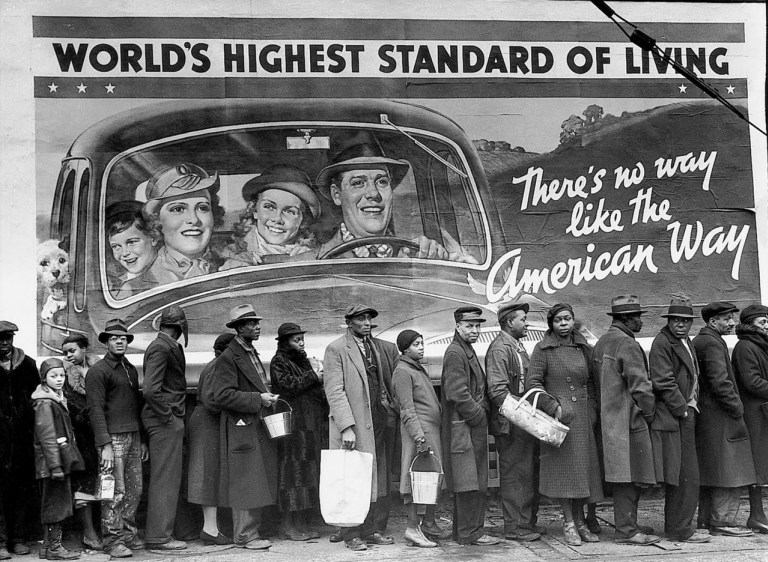
by Deep Green Resistance News Service | Mar 23, 2017 | Worker Exploitation
It’s a familiar story. On his final journey toward Jerusalem, Jesus stops in Bethany to eat at the home of Simon, a leper. A woman enters with an alabaster jar of expensive ointment; she breaks the jar and pours the ointment on his head. Her gesture invokes the fury of some of those present. The ointment was worth a year’s wage, they grumble. It could have been sold, and the money given to the poor.
“The poor will always be with you” was Jesus’ righteous and innocent enough reply. Jesus clearly did not pretend by his remark to be shedding new light on the problem of poverty. And when we remind ourselves, as we so often do, that “the poor will always be with us” (as they always have been), we are merely borrowing a manner of stating a fact we all accept without a second thought. It was a fact as unquestioned in Jesus’ time as it is today. But it is not exactly a fact about the poor – that they always have been (and always will be) with us. It is one of those collectively held assumptions that constitute the mythology of our culture, the culture of what has become our global civilization.
It is not an idle myth, that the poor will always be with us, but a vital myth, a powerful and essential means of sustaining our culture and the business of it as usual. It is a myth that has haunted me throughout my two and a half decades of feeling and actively expressing both compassion and indignation in relation to the persistence of hunger, homelessness and poverty in our affluent nation and abroad. Most of this time I have spent working in a soup kitchen and homeless shelter, trying, I suppose, to escape my own affluence and privilege as well as meet basic human needs and challenge the political powers.
The cultural ‘purpose’ of the myth is as clearly straightforward as it is debilitating to the caring activist: there’s no sense in trying to end poverty, except in our dreams. The dreams are reflected in our rhetoric, but under the surface we realize that the prize we can reasonably strive for is amelioration.
Consider, on the other hand, that poverty as we know it is not and has never been the fate of humanity, but instead is largely a product of civilization, as we know it. Columbus and other European explorers and colonists, for example, did not discover poverty here in the Americas; they created it. Defined in terms of security, control and access to life-sustaining resources, poverty and affluence take on a meaning apart from our conventional ‘standard of living’ measure. This reinterpretation prompted anthropologist Marshall Sahlins 50 years ago to identify tribal hunter-gatherers as the “original affluent societies”. He recognized a kind of wealth enjoyed – and enjoyed equitably – by tribal people that far surpassed in value the benefits we associate with having wealth in our culture. Perhaps because we have begun to change our own conventional measures of wealth, hunter-gatherers are beginning to be perceived by us in a more favorable light. My students do generally pause to consider if the Native Americans were ‘poor’ when encountered by European explorers, but then uniformly insist that they were not.
And although scientists discovered over a century ago that humans lived in this hunter-gatherer way for hundreds of thousands of years before the ‘Agricultural Revolution’ spawned our civilization and culture a mere 10,000 years ago, our history and our collectively held and lived mythology reduce the human experience to civilization-building. Our collective frame of reference not only omits the vast human experience prior to our history, it excludes the experience of humans flourishing in egalitarian tribes concurrent with our history. There are still today scattered pockets of tribal people who have never known the kind of poverty we take so for granted. This vast experience suggests that poverty is a function of culture, not of nature, which is relatively immutable.
So one way we perpetuate the myth of never-ending poverty is by continuing to believe, against the facts, that our history, the history of our culture, our civilization is the history of humanity itself and that anyone outside or predating this history is a poor, half-human savage. Many of us individually will nod to the facts when confronted by them. This matters little, because mythology is something a culture of people buy into together and give expression to in the way they live as a group.
In the same vein, a second and more recent source of fuel for the myth is that, in an important sense, we really don’t want poverty to go away. It is therefore convenient to believe that the poor will always be with us (as they have always been). We don’t want poverty to go away for at least two broad reasons.
The first is that our economic system necessarily generates poverty; but more specifically, our own employment increasingly depends on it. One day at Amos House, a young man was ejected from the soup kitchen for a rule infraction. On the curb outside, he shouted back at our social worker, “you know, if it wasn’t for me, you wouldn’t have a job!” I still ponder that remark 10 years later.
Automation and cheap foreign labor have challenged our economy to find new ways to sustain growth and keep people busy, and our economy has responded brilliantly. The service ‘industry’ has taken up the slack. As the Agricultural/Industrial Revolution displaced not only laborers, but also the life-sustaining role of small communities (tribes and then villages), it created tremendous neediness and marginalization, adding to the effects of automation. The demand for services to address mounting social problems provided the new raw material. Private and public service programs nicely fit the bill because they ease the pain and give the appearance of an effective response without actually solving the problem. Indeed, the kinds of short-term, palliative interventions provided by services often permit the problem to worsen long term. Additionally, this neat economic solution has inspired the cultural fabrication of more frivolous needs and wants to which an infinite number of new services can be introduced to stoke the furnace.
A second reason why we cling to the continuation of poverty, and also to marginalization more broadly, is that many of us, at least, need a place to actively express our care and compassion. We need people – beyond our immediate family members – to care for in the absence of the tribal context within which we once freely shared our care with other members in a mutual support network. I’m like my dog, Pearl, who without the opportunity to hunt instinctively, finds herself playing out the hunt in our house or backyard (sometimes in absurdly comical ways). I can’t say that humans are instinctively compassionate or that we were meant by God or anything else to live in tribes. But there is clearly a compassionate streak in us, expressed more in some people than in others, and humans have lived tribally for 99% of our time on earth. Tribalism is a way of life that has tested out, notwithstanding its relatively recent setback in the face of our own civilizational expansion (Despite how the balance of this competition appears to us, it is too early to call the match.)
Mutual care, generated more by survival needs and self interest than by altruism, is the basis of support in the tribe. In our world, this support has been supplanted by services, mainly professional services working within a service system. Service, in fact, is simply the attempt to meet needs outside the context of community. Just as we do not use the word ‘service’ to label the care we provide within our families, likewise there is no equivalent concept of ‘service’ among tribal people. For individuals with an especially caring disposition, the service system provides the only available outlet, other than the care provider’s own family. The weakening nuclear family, however, like the extended family, clan, village and tribe before it, has increasingly surrendered its support function to professional services. Following this trend, we could all soon find ourselves supported by service providers alone.
John McKnight makes a compelling case that the professional service system is a poor substitute for the kind of support system only a genuine community can provide. It is inferior on many counts, not the least of which is that it frustrates the caring service provider who enters the field of teaching, health care or social work in order to give care only to face one systemic obstacle after another. McKnight insists that the professional service system and its network of private and public institutions and agencies are not geared to providing care, only professional services. To give and receive care, there is no substitute for community. I consider the tribe to be the archetype of community in this sense.
So far I have identified our collectively held assumption that “the poor will always be with us” as a tragic, self-fulfilling prophecy based on mistaken assumptions. I have also named four factors contributing to the perpetuation of the myth and the consequent perpetuation of poverty:
- We collectively believe that human poverty is an inevitable part of the natural order in general and of the nature of humans in particular.
- We understand that, in fact, the poor have always been with us.
- An increasing number of jobs and institutions (and the economy itself) depend on the continuation or worsening of poverty and marginalization.
- The marginalized provide caregivers somewhere to direct their compassion.
A revised understanding of the inevitability of poverty lends itself to at least two general change strategies. Although activists like myself tend to favor more action-sounding suggestions, the first and perhaps most radical thing we can do is help surface our cultural mythology and replace it with principles of living that will work better for us – and possibly lead to the elimination of poverty. For “the poor will always be with us” we might substitute something like: “The universe consists of cycles of creation and destruction, birth and death, but within this framework, the earth will provide.” Our planet and its abundant and richly diverse community of life offer an adequate and acceptable support system for us, as they do for all other species. No one should languish in the kind of marginal destitution we commonly call ‘poverty’. This strategy is one of learning and relearning.
The second avenue is building community – finding small and more ambitious ways of reintegrating ourselves into small-scale economies of support founded on trusting relationships. In My Ishmael, Author Daniel Quinn distinguishes between a tribal economy founded on the exchange of human energy:

and our economy that is founded on the exchange of products, including service products:

To the extent that we can transfer our faith and reliance from the products system to the communal support system, we contribute to the atrophy (and eventual elimination) of the products system, its institutions and political structures and jurisdictions. The kind of poverty we are familiar with has been with us through the emergence of our civilization because it is inherent in the culture of our civilization, if not in civilization as a mode of social organization in general. Poverty can be eliminated, but it will require a fundamental break from the way we have been thinking and living.
Our current worldview, allegiances and psychological attachments strongly favor the prevailing way of life, as does the usual default assumption that the world is simply going to continue on its trajectory toward a ‘more and bigger’ version of what we have today. But like a recessive gene, our capacity to trust the earth and live by each other’s support and unique gifts lies within each of us, dormant for the most part, but ready to surface and engage after an initial adjustment process. Many disaffected youth, still partially dependent on the products system, have nevertheless chosen to live tribally simply to support their refusal to eke out a living in the usual way, preferring the freedom and vitality of life on the outside. Less dramatic experiments, ranging from intentional rural communities to urban block association activity, point in the ‘give support/get support’ direction.
By the standards of tribal wealth, even our financially well off are quite poor. In my facilitation work with the materially comfortable in churches and nonprofits, I find a surprising receptivity to this disturbing message. A million dollars, for example, is not enough to insure against having to spend the last decade of life in a nursing home. One source of hope for me – as distant as it appears – lies in the potential for defection within the middle and upper classes. As ‘winning’ the products contest rewards us with a life that is increasingly accelerated, virtual, alienating and superficial – as well as ecologically perilous – the rewards of abandoning the game we play for life with the trees and sky – and each other – will prove increasingly irresistible. The ‘simple living’ trend of the past decade may portend a shift that is deeper and more widespread; this shift could provide a catalyst for the cultural break necessary to end poverty.
It certainly lies outside the box to imagine rich people releasing their hold on product wealth and the means of creating it, but this will be a natural side effect of their shifting attention in the direction of acquiring a different kind of wealth. The marginalized poor would then have a better chance of reestablishing access to land resources. Unfortunately, the prevailing models of development in poor communities and countries are the models offered by the products system, which the poor themselves generally look to as the only way out. Alternatively, organizations committed to reducing poverty should emphasize strategies that regenerate the kind of self-reliant, give support/get support community life that can regenerate the kind of wealth we have paved over with a product-driven culture of winners and losers.
This essay is adapted from Jim Tull’s new book, Positive Thinking in a Dark Age. A somewhat different version first appeared in The Other Side, May-June 2002, Vol. 38, No. 3. Republished with permission.
by Deep Green Resistance News Service | Apr 29, 2013 | Climate Change
By John Vidal / The Guardian
The concentration of carbon dioxide in the atmosphere has reached 399.72 parts per million (ppm) and is likely to pass the symbolically important 400ppm level for the first time in the next few days.
Readings at the US government’s Earth Systems Research laboratory in Hawaii, are not expected to reach their 2013 peak until mid May, but were recorded at a daily average of 399.72ppm on 25 April. The weekly average stood at 398.5 on Monday.
Hourly readings above 400ppm have been recorded six times in the last week, and on occasion, at observatories in the high Arctic. But the Mauna Loa station, sited at 3,400m and far away from major pollution sources in the Pacific Ocean, has been monitoring levels for more than 50 years and is considered the gold standard.
“I wish it weren’t true but it looks like the world is going to blow through the 400ppm level without losing a beat. At this pace we’ll hit 450ppm within a few decades,” said Ralph Keeling, a geologist with the Scripps Institution of Oceanography which operates the Hawaiian observatory.
“Each year, the concentration of CO2 at Mauna Loa rises and falls in a sawtooth fashion, with the next year higher than the year before. The peak of the sawtooth typically comes in May. If CO2 levels don’t top 400ppm in May 2013, they almost certainly will next year,” Keeling said.
CO2 atmospheric levels have been steadily rising for 200 years, registering around 280ppm at the start of the industrial revolution and 316ppm in 1958 when the Mauna Loa observatory started measurements. The increase in the global burning of fossil fuels is the primary cause of the increase.
The approaching record level comes as countries resumed deadlocked UN climate talks in Bonn. No global agreement to reduce emissions is expected to be reached until 2015.
“The 400ppm threshold is a sobering milestone, and should serve as a wake up call for all of us to support clean energy technology and reduce emissions of greenhouse gases, before it’s too late for our children and grandchildren,” said Tim Lueker, an oceanographer and carbon cycle researcher with Scripps CO2 Group.
The last time CO2 levels were so high was probably in the Pliocene epoch, between 3.2m and 5m years ago, when Earth’s climate was much warmer than today.
From The Guardian: http://www.guardian.co.uk/environment/2013/apr/29/global-carbon-dioxide-levels

by Deep Green Resistance News Service | Mar 6, 2013 | Climate Change



By Daniel Whittingstall / Deep Green Resistance Vancouver
The Situation and Our Options
Increased concentrations of atmospheric greenhouse gases (GHG), primarily carbon dioxide emitted from the burning of fossil fuels for cheap energy, have driven global average temperatures to rise. While this in itself is cause for concern, the real distressing predicament lies within the many positive feedbacks that are at or near their tipping points.
One major positive feedback is the arctic permafrost where large amounts of methane (a greenhouse gas) are stored underground. If the temperature continues to rise from the current 0.8C up to 1.5C above pre-industrial levels the permafrost will hit a tipping point and melt, releasing roughly 1,000 giga-tones of methane (which is 22 times more potent a greenhouse gas than C02 over a 100 yr. period, and 150 times more potent over a period of a couple years) into the atmosphere.
Since the global temperature is currently being raised due to Industrial Civilization’s increase of these GHG’s, and there is a time-lag between temperature rise and GHG levels (temperature catching up to where these gases have set the bar, roughly a 30 yr. time-lag), then all we need to do to find out how close we are to this tipping point is to look at current and historic levels of GHG’s and the correlating temperatures, right? Come walk with me for a moment.
Current C02 levels are at 395 ppm (C02 being the main factor in the last 180 yrs. of forcing temperature rise, most of which has increased in the past 30 yrs.). The last time C02 levels were this high was roughly 15 million years ago (mya), with temperatures roughly 3-6C above current levels (or 4-7C above pre-industrial times). It would be good to note here that projected emissions and C02 levels by 2030, if “business as usual” continues, will be around 516-774 ppm; levels closer to those of the Eocene 54-50 mya when temperatures were roughly 5-7C higher than today.
Since there is a time-lag between temperature rise and levels of C02 we can be certain that the temperature will rise 3-6C over the next 30 yrs. solely based on current levels of C02 alone. This of course would be the case without adding in any positive feedbacks like the melting of permafrost, arctic sea ice, ice caps, glaciers, ocean die offs due to acidification and rapid forest die offs due to drought/deforestation etc.
The thing is, the world has changed quite a bit in the last 15 myr. A lot more carbon, and other substances with the potential to turn into GHG’s, have been stored in the earths surface due to the resumption of glacial cycles (since 13 mya the earth has plummeted into glacial cycles-5 mya and rapid glacial cycles-2.5 mya), increasing the potential/possibility with which to warm the globe if they were ever to be fully released.
You see, the other tricky part about this time-lag is that if there was a huge spike in GHG’s over a shorter period of time, lets say 5-10 yrs. (which would definitely be the case if permafrost, ocean and forest die off positive feedbacks were to be pushed over their tipping points, thus releasing massive quantities of methane and C02), the global temperature rise would also increase at an exponential rate. Not to mention the fact that methane has a minute time-lag in comparison to C02.
So, a more realistic picture would be: current GHG levels will undeniably rise temperatures past the 1.5C mark in the next 10-15 yrs., pushing the permafrost over its tipping point and hurling it into a rapid positive feedback loop, drastically escalating the already exponential rate of global temperature rise. During (or even possibly before) this short process, every other positive feedback will come into play (this is because they are all just as sensitive to temperature and/or C02 increases as permafrost is) forcing the global temperature to rise beyond any conservatively or reasonably projected model.
What’s really concerning in all this is that the arctic sea ice, permafrost, glaciers and ice caps have already begun their near rapid melt, and we continue to increase our output of fossil fuel GHG emissions and deforest the earth. Does anyone know what more than a 5-7C temperature rise looks like? Near-term extinction for the majority of biological life, including humans. It means that almost all fresh and drinkable water will dry up. It means that the sea levels will rise by roughly 120 meters (394 ft). It means that the current levels of oxygen in the atmosphere right now will become so low that neither I nor you will be able to breath it. This is the part where most people start formulating rebuttals that usually include the word “alarmist!”. Well, if the bare facts of our current situation are not alarming then I would think we have an even bigger problem.
There are two distinct scenarios here that I feel need to be pointed out (most often they are not). The first one goes like this: if we keep destroying the Earth and continue down this path of “business as usual” then the biosphere will collapse and along with it the global economy and ultimately industrial civilization.
The other scenario goes like this: if the destruction perpetuated by industrial civilization is somehow halted, subsequently averting total biosphere collapse, then the global economy and industrial civilization will collapse.
Basically, in the next 10-15 yrs., it is unequivocal that either way the global economy and industrial civilization (all that we who are living within this structure know and rely on) will collapse.
Kind of makes the worry of a national economic recession seem like a bad joke. The question is then: which scenario would you prefer? The near extinction of all life on earth (including your own species), or the end of a really bad experiment in social organization that has almost, but not quite, destroyed the planet?
The only chance of survival is to immediately end the consumption of fossil fuels (on all levels and in every way, including well-intentioned “green-energy-solutions” that pump huge amounts of C02 into the atmosphere annually during set-up and production), and to quickly begin sequestering GHG’s from the atmosphere. Best way to end this consumption would be to shut down all fossil fuel extractions, and to lock up all ready-to-be-used fossil fuels: gasoline, coal, stored natural gas, and throw away the key. Best way to sequester the GHG’s (semi-naturally) would be to plant native-to-bioregional plants/trees wherever they had been destroyed, and to grow our own food locally in the parks, on roadways, on rooftops, and on the front/back lawns of every suburban home.
These are our only two options, and we need to do both at the same time. Realistically this means we will need to bring down atmospheric C02 levels to where they were in pre-industrial times. In order to have any certainty of success we must be 50% of the way there by about 2016, and 100% there by 2020.
Yes, things look bad. But it all depends on your perspective. One good thing is that civilization does not represent the whole of humanity, nor does it represent any other species of life on earth. So, on the one hand it doesn’t look too good for civilization if people decide to rise up and end this insanity (which would subsequently be a positive effect on the biosphere and the rest of humanity). But, on the other hand, well…not so good for anyone.
Nevertheless be encouraged, we still have a small window of time in which to succeed!
Overview of Data
Below are dates with projected increases of both C02 and global temperature, along with projected tipping points for major positive feedback loops around the world.
Reasonable Estimation of Temperature Correlation With C02 Levels
These calculations are based only on current levels of C02 and historic corresponding
temperature level values, no future increase of C02, no current or future positive feedbacks.
Current level of C02 395 ppm = 4.5C increase above current temp, average between 3-6C
(2013, 0.8C).
35 year time-lag = 2048 at 4.5C increase
Estimates For C02 Increase
C02 ppm increase at current rate, five year increments
| 2013 |
2018 |
2023 |
2028 |
2033 |
2038 |
2043 |
| 395 |
405 |
415 |
425 |
435 |
445 |
455 |
C02 ppm increase at current rate with increase of fossil fuel consumption and positive feedbacks
| 2013 |
2018 |
2023 |
2028 |
2033 |
2038 |
2043 |
| 395 |
415 |
435 |
455 |
495 |
535 |
575 |
Estimates For Temperature Increase
Temperature based on current trends over past 20 years (without further inputs)
| 2013 |
2020 |
2030 |
2040 |
2050 |
2060 |
| 0.80 |
0.90 |
1.05 |
1.20 |
1.35 |
1.50 |
Temperature increase based on C02 correlation/35 year time lag
| 2013 |
2018 |
2023 |
2028 |
2033 |
2038 |
2043 |
2048 |
| 0.80 |
1.33 |
1.86 |
2.39 |
2.92 |
3.45 |
3.98 |
4.51 |
Temperature increase based on C02 correlation and forcing from positive feedbacks
| 2013 |
2018 |
2023 |
2028 |
2033 |
2038 |
2043 |
2048 |
| 0.80 |
1.45 |
2.23 |
3.04 |
4.06 |
4.88 |
5.90 |
6.90 |
Note:
2050 Conservative estimates based on current trends for major tipping points
2018 Reasonable estimates based on C02 and positive feedbacks for major tipping points
2034 Average between both estimates for major tipping points
Individual Tipping Points for Positive Feedbacks
2016 1.11C increase -Arctic sea ice tipping point (warmer oceans)
2018 1.33C increase -Arctic clathrate tipping point (methane release)
2019 1.43C increase -Greenland and Antarctic ice sheet tipping points (sea level rise)
2020 1.54C increase -Permafrost tipping point (methane release)
2028 455ppm C02 -Ocean acidification tipping point (C02 release) 
Fig. 1. This shows the variations between projected increases in temperature: bottom line (brown) represents the rate of temperature increase based on the C02 correlation with a 35 year time lag, and top line (green) represents the temperature increase with C02 correlation including forcing from positive feedbacks.
Overview of Concepts in Climate Change
Carbon Dioxide
Carbon dioxide (CO2) is a naturally occurring chemical compound and is a gas at standard temperature/pressure. CO2 exists in Earth’s atmosphere as part of the carbon cycle, emitted through plant and animal respiration, fermentation of liquids, volcanic eruptions as well as various other means. Levels of CO2 concentrations have risen and fallen over the past 3 billion years but with striking clockwork over the last 800 thousand years, rising and falling on a cycle of 40-100 thousand years (Fig. 2).
Ice core data indicate that CO2 levels varied within a range of 180 to 300 ppm over the last 650 thousand years (Solomon et al. 2007; Petit et al. 1999), corresponding with fluctuations from glacial and interglacial periods, with the last interglacial period nearing levels of 290 ppm (Fischer et al., 1999).
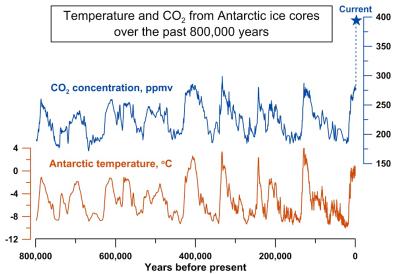
Fig. 2. This is a record of atmospheric CO2 levels over the last 800,000 years from Antarctic ice cores (blue line), and a reconstruction of temperature based on hydrogen isotopes found in the ice (orange line). Concentrations of CO2 in 2012, at 392 parts per million (ppm), from the Mauna Loa Observatory are shown by the blue star at the top (Simple Climate, 2012. Credit to: Jeremy Shakun/Harvard University). https://simpleclimate.wordpress.com/2012/04/04/global-view-answers-ice-age-co2-puzzle/
Near the end of the Last Glacial period, around 13,000 years ago, CO2 levels rose from about 180 ppm to about 260 ppm and leveled off until the Industrial Revolution in the mid 1700’s when it began to climb from 280 ppm (Neftel et al. 1985). While that 260 ppm of CO2 had remained more or less unchanged for the last 10,000 years, roughly since early Civilization, it was the actions of Civilization through the burning of fossil fuels, since the Industrial Revolution, that caused a dramatic increase over the last century (Blunden et al. 2012, S130).
The contribution of Industrial Civilization’s CO2 comes mainly from the combustion of fossil fuels in cars, factories and from the production of electricity and deforestation for timber and agricultural lands. Today the monthly mean concentration levels, (Fig. 3), are around 394 ppm (Recent CO2 readings for 2012 at the Mauna Loa Observatory by the National Oceanic & Atmospheric Administration), increasing about 100 ppm from pre-industrial times in just the last 100 years and currently rising at a rate of 2 ppm each year.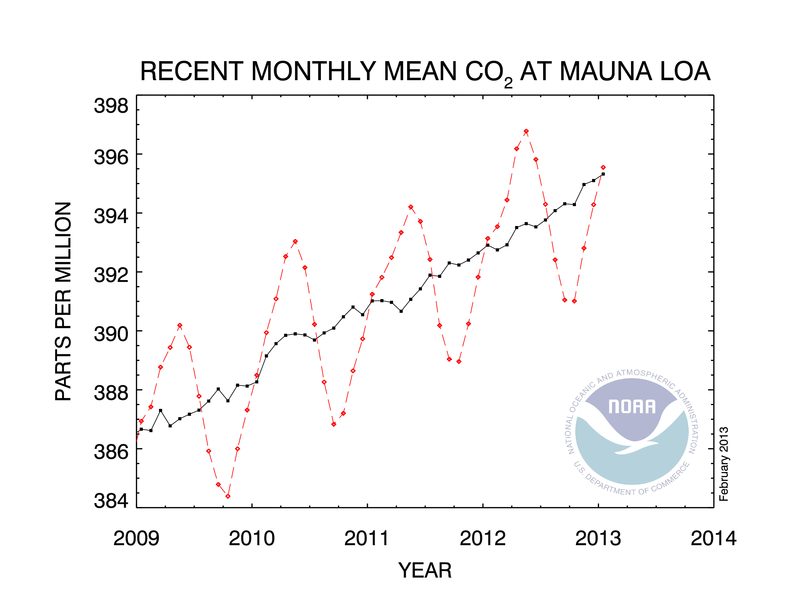
Fig. 3. This table shows monthly mean CO2 measurements for the years 2008 to 2012 from the Mauna Loa Observatory, Hawaii. The dashed red line represents monthly mean values, and the black line is representative of monthly mean values with the correction for average seasonal cycles (NOAA Earth System Research Laboratory, 2012). http://www.esrl.noaa.gov/gmd/ccgg/trends/#mlo_full
Carbon dioxide has a long lifespan once emitted into the atmosphere. “About half of a CO2 pulse to the atmosphere is removed over a time scale of 30 years; a further 30% is removed within a few centuries; and the remaining 20% will typically stay in the atmosphere for many thousands of years.” (Solomon et al. 2007).
Therefore, the amount of CO2 currently in the atmosphere will possibly be persisting long enough to mingle with future emissions that are projected to be higher. Based on CO2 emissions from burning fossil fuels in the year 2000, the IPCC calculated out the possible future increase of emissions if Civilization continued at that current rate of economic and consumer growth (increased fossil fuel consumption). “The projected emissions of energy-related CO2 in 2030 are 40–110 % higher than in 2000” (Solomon et al. 2007).
This could result in an increase of atmospheric CO2 from levels that were 369 ppm at the time, to 516-774 ppm by 2030 (Fig. 4); levels closer to those of the Eocene, 700-900 ppm roughly 54-50 million years ago (Paul N. Pearson 2000), when temperatures were about 5-7 degrees Celsius warmer than today and sea levels were roughly 120 m higher (Sluijs et al. 2008).
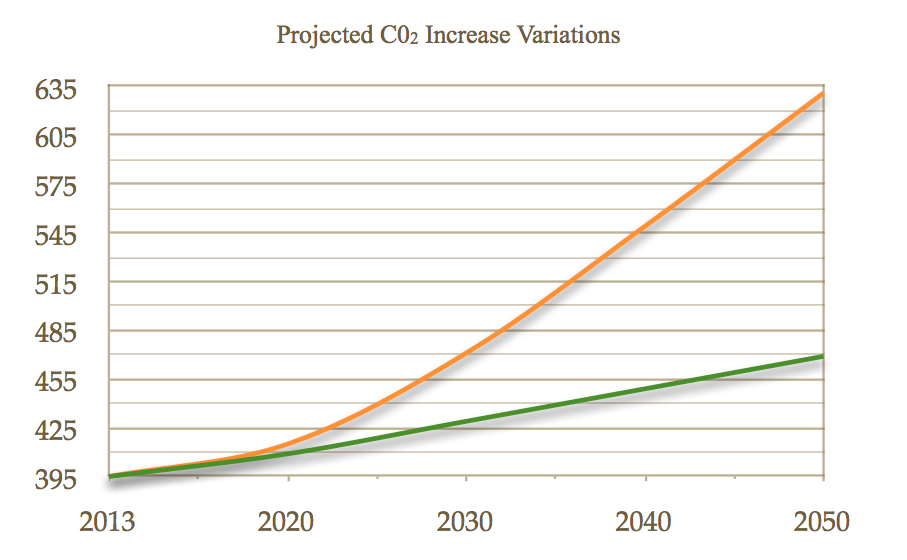
Fig. 4. This table shows the variations between projected C02 increases: bottom line (green) is the current rate of increase at 2ppm/yr. based on previous ten year average, top line (orange) is current rate plus increased Industrial Civilization forcing and positive feedbacks.
Greenhouse Earth
The environmental effects of carbon dioxide are of significant interest. Earth is suitable for life due to its atmosphere that works like a greenhouse. A fairly constant amount of sunlight strikes the planet with roughly 30 percent being reflected away by clouds and ice/snow cover, leaving the uncovered continents, oceans and atmosphere to absorb the remaining 70 percent. Similar to a thermostat, this global control system is set by the amount of solar energy retained by Earth’s atmosphere, allowing enough sunlight to be absorbed by land and water and transforming it into heat, which is then released from the planet’s surface and back into the air as infrared radiation.
Just as in the glass ceiling and walls of a greenhouse, atmospheric gasses, most importantly carbon dioxide, water vapor and methane, trap a fair amount of this released heat in the lower atmosphere then return some of it to the surface. This allows a relatively warm climate where plants, animals and other organisms can exist. Without this natural process the average global temperature would be around -18 degrees Celsius; see more (Solomon et al. 2007).
The current levels of greenhouse gas (GHG) concentrations, principally carbon dioxide (Fig. 3), in the Earth’s atmosphere today are higher and have the potential to trap far more radiative heat than has been experienced within the last 15 million years (Tripati 2009), amplifying the greenhouse effect and raising temperatures worldwide. “The total CO2 equivalent (CO2-eq) concentration of all long-lived GHG’s is currently estimated to be about 455 ppm CO2-eq” (Solomon et al. 2007), as of 2005. These other contributors of GHG’s include methane released from landfills, agriculture (especially from the digestive systems of grazing animals), nitrous oxide from fertilizers, gases used for refrigeration and industrial processes, the loss of forests that would otherwise store CO2, and from the melting of permafrost in the arctic.
According to the IPCC Fourth Assessment Report “These gases accumulate in the atmosphere, causing concentrations to increase with time. Significant increases in all of these gases have occurred in the industrial era”, and the increases have all been attributed to Industrial Civilization’s activities (Solomon et al. 2007).
Historically, through the rise and fall of temperatures over the last 800 thousand years, temperatures have risen first, then CO2 would increase, accelerating even more temperature rise until a maximum when both would then drop, creating a glacial period. Though CO2 levels over this period of time have not been the trigger for temperature rise and interglacial periods, they either have occurred at the same time or have led positive feedback global warming during the stages of deglaciation, greatly amplifying climate variations and increasing the global warming capacity due to the greenhouse effect (Shakun et al. 2012), (Solomon et al. 2007).
What makes the present situation unpredictable to some extent is that never before has CO2 climbed so rapidly and so high, far ahead of temperature. Furthermore, this extra heat-trapping gas released into the atmosphere takes time to build up to its full effect, this is due to the delaying effect of the oceans as they catch up with the temperature of the atmosphere; deep bodies of water take longer to warm. There is a twenty-five to thirty-five year time lag between CO2 being released into the atmosphere and its full heat-increasing potential taking effect.
This means that most of the increase of global temperature rise observed thus far has not been caused by current levels of carbon dioxide but by levels that already have been in the atmosphere before the 1980’s. What is troublesome here is that these last three decades since then have seen the levels of greenhouse gases increase dramatically. On top of the current temperature rise we see now there is already
roughly another thirty years of accelerated warming built into the climate system.
There are many other Civilizational factors that contribute to this global rise in temperature outside of GHG’s. While these extra factors do supply further warming and are just as serious a threat to a semi-stable climate, they are not as long lasting.
One of the most notable of these, being the second largest Civilizational contributor to global temperature rise, is black carbon (BC), also called soot (T. C. Bond et al 2013). The greatest sources of BC are the incomplete burning of biomass (forest and savanna burning for agricultural expansion) and unfiltered diesel exhaust for transportation and industrial uses (Ramanathan and Carmichael 2008). There is a two fold warming effect from the BC.
First, the dark particles of this soot absorb incoming heat from solar radiation and directly heat the surrounding air, though only for a short period of time. Secondly, the soot particles in the air, once carried from their point of origin, are increasingly falling on snow and ice changing these reflective surfaces into absorptive ones, decreasing the albedo (reflectivity). Therefore, BC deposits have increased the melting rate of snow and ice.The most alarming of these effects can be seen on glaciers, ice sheets and the arctic sea ice (T. C. Bond et al 2013). While reductions in BC would have immediate but not long lasting effects on temperature rise, it would increase the chances of averting further warming
Nevertheless, the projected rise due to the continued increase in levels of GHG’s will not be prevented without
reducing overall emissions.
Temperature
The Earth is warming and this time the trend is far from natural. The average temperature of the Earth’s surface has risen by 0.8 degrees Celsius since the late 1800s (Fig. 4). On a geologic timescale this swift increase is alarming. When temperatures have risen in the past, warming the planet at several points between ice ages, the average length of time this process has taken is roughly 5,000 years to increase global temperatures by 5 degrees.
In this past century alone the temperature has risen ten times the average rate of ice age recovery warming, a recent trend not only driven by the rise of atmospheric CO2 concentrations, but also amplified by them.

Fig. 4. This table shows global temperature anomaly from 1880 through to 2011. Black lines are representative of annual mean variances and the red line is representative of five year running temperature mean’s. (NASA Goddard Institute for Space Studies, 2012) http://data.giss.nasa.gov/gistemp/2011/Fig2.gif
Continued economic, global population and energy consumption growth over the next few decades will consequently increase not only CO2 emissions, but also the rate and quantity with which they accumulate in the atmosphere. This is a business-as-usual scenario where efforts to reduce greenhouse gas emissions, namely CO2, have fallen short of any earnest mitigation, “locking in climate change at a scale that would profoundly and adversely affect all of human Civilization and all of the world’s major ecosystems” (Allison et al. 2009); see scenario A1FI (Fig. 5).
Even if the global mean temperature only rises another 2 degrees before the end of this century, it would be a larger increase in temperature rise than any century-long trend in the last 10,000 years. A one degree global temperature rise is also significant for the reason that it takes a vast amount of heat to warm all the oceans, atmosphere, and land by that much; even more so is the significance of subsequent ecosystem collapse in climate sensitive areas such as the Arctic due to such a rise.

Fig. 5. This is a reconstruction of global average temperatures relative to 1800-1900 (blue), observed global average temperatures since 1880 to 2000 (black), and projected global average temperatures out to 2100 within three scenarios (green, yellow and red), (Allison et al. 2009). Scenario A1FI, adopted from the IPCC AR4 2007 report, represents projections for a continued global economic growth trend, and a continued aggressive exploitation of fossil fuels; the FI stands for “fossil fuel intensive”. http://www.ccrc.unsw.edu.au/Copenhagen/Copenhagen_Diagnosis_HIGH.pdf
Arctic Warming
The greatest changes in temperature over the last hundred years has been in the northern hemisphere, where they have risen 0.5 degrees Celsius higher since 1880 than in the southern hemisphere (Fig. 6). The Arctic is experiencing the fastest rate of warming as its reflective covering of ice and snow shrinks and even more in sensitive polar regions.
One of the main facets that are being affected by the increase of temperature in the Arctic is the potential collapse of Arctic ecosystems that succeed in the region. Ecosystems that are under pressure and that are at their tipping points can be defined as having their thresholds forced beyond what they can cope with. Different components of ecosystems experience diverse changes. In this instance,
“ecosystem tipping features” refers to the components of the ecosystem that show critical transitions when experiencing abrupt change (Duarte et al. 2012).
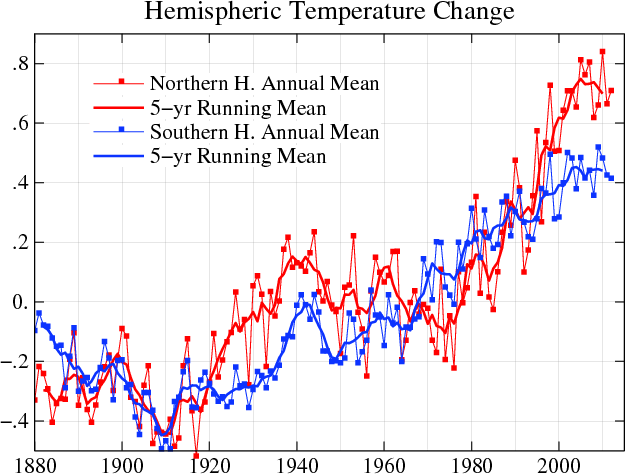
Fig. 6. This table shows both annual and five year mean temperature variances between 1880 and 2011. Temperature mean averages for the northern hemisphere are in red and southern hemisphere averages are in blue (NASA Goddard Institute for Space Studies, 2012). http://data.giss.nasa.gov/gistemp/graphs_v3/Fig.A3.gif
Sea Ice Loss
The significance of sea ice loss in the Arctic relates to a serious tipping point in the Arctic marine ecosystem which is given by the temperature at which water changes state from solid to liquid. Ice responds suddenly to changes at this temperature. This causes warming and loss of sea ice to amplify the potential changes to the climate including a reduction in albedo with the declining sea ice. Crossing the tipping point sets in motion many changes that further increases temperature in the Arctic region on top of current global warming (Duarte et al. 2012).
The ice that encompasses the Arctic has slowly been dwindling ever since a catastrophic collapse in the Arctic region in 2007. Since that point, close to two thirds of the ice has vanished compared to a decade earlier when the loss of sea ice was significantly smaller (Anderson, 2009). Scientists had previously predicted that the ice in the Arctic region would not be reduced to the point that it reached in 2007 until at least 2050, and in 2012 it dropped to levels much lower than in 2007 (Fig. 7). It is now predicted that the Arctic summer ice could disappear entirely as early as 2013.
The vulnerable setting of the Arctic region has certainly made it easy for global warming to have significant influences on the natural climate processes. The white ice naturally reflects sunlight back into space, but with the melting of the ice and subsequent open, dark sea water, the reflectivity is reduced and therefore the heat is retained instead. The arctic seas warm up, melting more ice, and then even more is absorbed and melted by the increasing water temperature change. This creates a dangerous feedback loop that intensifies melting and overall temperatures.
Observations and climate models are in agreement that through the 21st century, Arctic sea ice extent will continue to decline in response to fossil fuels being burnt and greenhouse gases being released into the atmosphere. Through the influxes of heat being circulated, temperature for the terrestrial and aquatic systems continues to increase, delaying ice growth during winter and autumn only to increase the temperature on the region.
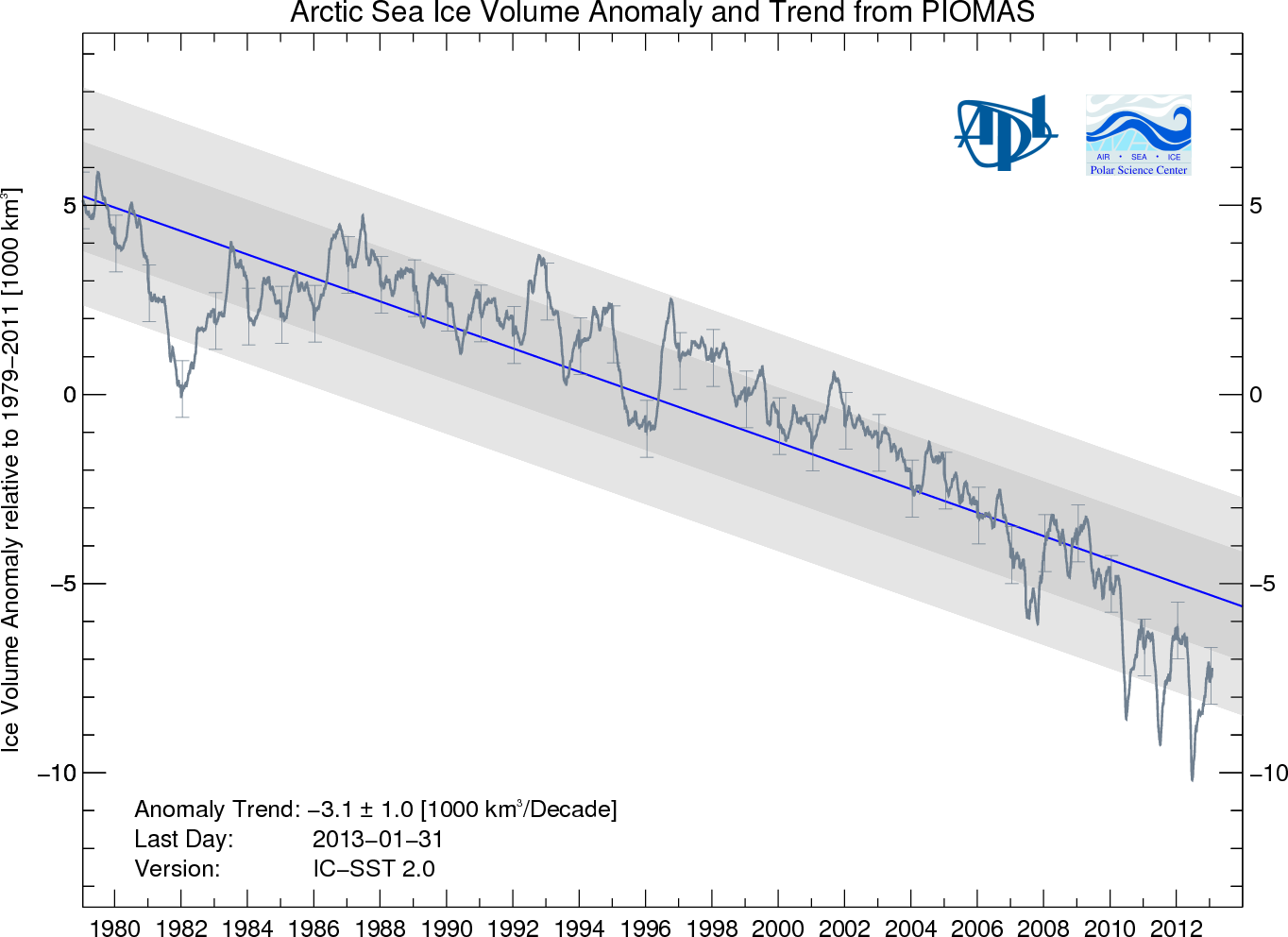
Fig. 7. This table shows the ice volume anomalies of the Arctic ocean, with respect to the volume of ice over a period between 1979 to 2011. (Polar Science Center, psc.apl.washington.edu. 2011) http://psc.apl.washington.edu/wordpress/wp-content/uploads/schweiger/ice_volume/BPIOMASIceVolumeAnomalyCurrentV2.png?%3C%3Fphp+echo+time%28%29
Permafrost Melt
One of the most worrisome scenarios of a positive feedback is the thawing of huge quantities of organic material locked in frozen soil beneath Arctic landscapes. Vast quantities of carbon and methane from once rotting vegetation are stored in the frozen soil. This frozen soil is called permafrost and it contains significantly more carbon than is currently in the atmosphere.
Permafrost is defined as subsurface Earth materials remaining below 0°C for two consecutive years. It is thoroughly widespread in the Northern Hemisphere where permafrost regions occupy 22% of the land surface (Schuur et al. 2008).
The temperature, thickness and geographic continuity of permafrost are controlled by the surface energy balance. Permafrost thickness geographically ranges from 1 meter to 1450 meters depending on where the permafrost is situated. The layer that thaws in the summer and refreezes in the winter is referred to as the active layer. The thickness of the active layer ranges between 10 centimeters and 2 meters. Beneath the active layer is the transition zone, the buffer between the active layer and the more stable permafrost. The thickness of the active layer is significant because it influences plant rooting depth, hydrological processes, and the quantity of organic soil matter uncovered to the above-freezing seasonal temperatures. The growing concern is that permafrost’s relationship with the Arctic warming could lead to drastic changes for the region.
The processes that involve the transfer of stored carbon into the atmosphere have the potential to significantly increase climate warming in the Arctic region (Schuur et al. 2008). Since it only would take a few more degrees in temperature rise to tip the permafrost into rapid thawing and subsequently release huge amounts of stored carbon and methane, methane being over 20x as potent a greenhouse gas, this would result in a much larger feedback into the global GHG level rise.
A Warmer World
Industrial Civilization is on a path to heat the Earth up by 4 to 7 degrees Celsius before the middle of this century if it fails to end its carbon emissions, triggering a cascade of cataclysmic changes that will include the increase of extreme heat-waves, prolonged droughts, intensified weather patterns, the total loss of Arctic sea ice, rapid decline in global food availability, sea level rise affecting billions of people, and eventually an abrupt extinction of the majority of biological life on earth.
The solution, while not a simple one to execute, is clear: Industrial Civilization must end its reliance on fossil fuels and begin to sequester CO2 from the atmosphere immediately, reducing the atmospheric concentration of CO2 down to a safe level.
A full reference list for this article is available here: http://dgrnewsservice.org/newsservice/2013/03/reference-material1.pdf
